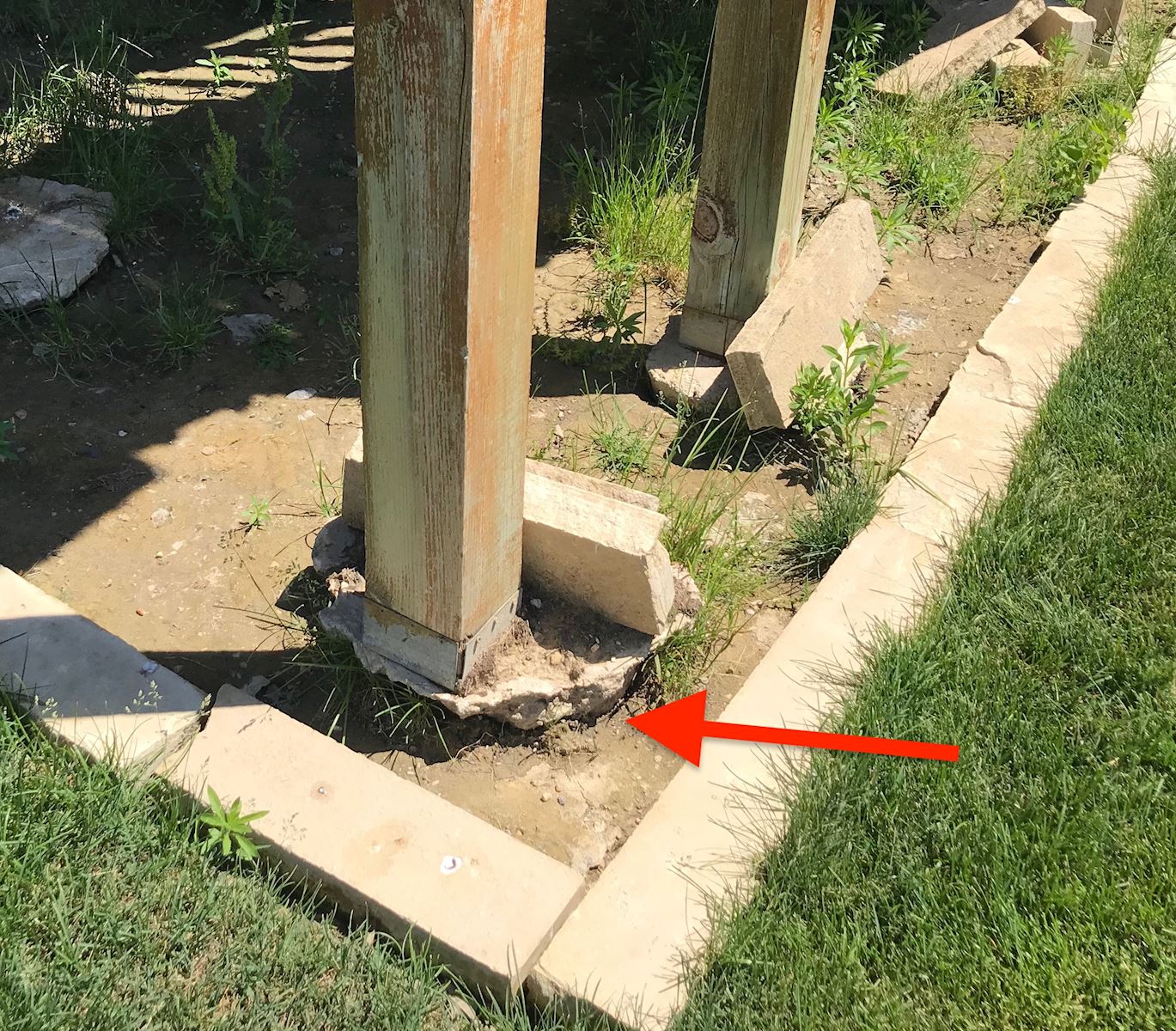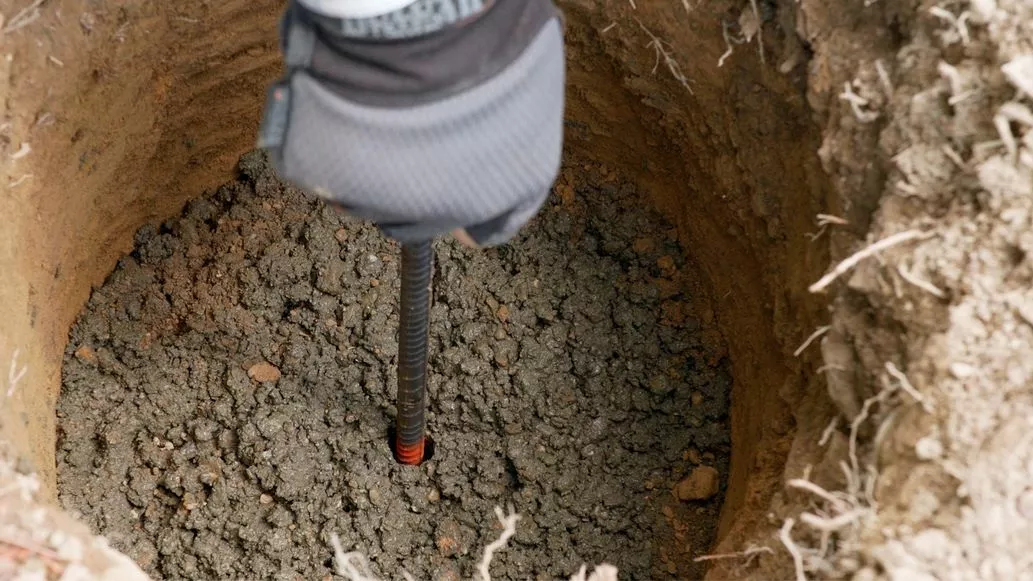Deck Footings Unveiled: Comprehending the Secret Parts of a Trusted Deck Structure
Deck Footings Unveiled: Comprehending the Secret Parts of a Trusted Deck Structure
Blog Article
Picking the Right Deck Footings for Stability and Toughness
The longevity and security of your deck depend greatly on the kind of footings you pick, as they offer the important assistance and security to withstand the examination of time. In this conversation, we will check out the numerous kinds of deck footings, think about the important elements to evaluate when making a choice, and delve right into the pros and cons of various alternatives.
Sorts Of Deck Grounds
There are numerous kinds of deck grounds that can be made use of, each offering unique advantages and considerations. One usual sort of footing is the concrete pier footing. These footings include a cylindrical opening loaded with concrete, which offers a solid foundation for the deck articles. Concrete pier grounds are fairly very easy to mount and offer outstanding stability, making them a prominent selection for several deck tasks.
These grounds are installed by screwing them right into the ground, which produces a safe foundation for the deck. They additionally permit for very easy modification and leveling of the deck if required.
Additionally, some contractors go with precast concrete grounds. These grounds are made from resilient concrete and can be found in different forms and sizes to suit different deck designs. Precast concrete grounds are convenient to mount and offer a stable base for the deck framework.
Finally, one more option is the post-in-anchor ground system. This kind of ground includes driving a steel anchor right into the ground and affixing it to the deck article. It offers adaptability in terms of positioning the deck posts and appropriates for decks with light-weight structures.
When picking the best kind of deck footing, it is important to take into consideration elements such as dirt conditions, deck tons, and neighborhood structure codes (Deck Footings). Consulting with a specialist contractor or architectural designer can help guarantee the proper footing is selected for a secure and secure deck
Aspects to Consider When Selecting Grounds
When picking the appropriate footings for a deck, it is essential to meticulously consider different variables such as dirt conditions, deck load, and adherence to local structure codes. These variables play a significant function in making sure the stability and sturdiness of the deck framework.
The kind of soil on which the deck will certainly be constructed identifies the type of grounds required. On the other hand, decks developed on clay or expansive dirts might need grounds that can suit the dirt's propensity to broaden and contract.
An additional crucial aspect is the deck tons. The weight of the deck, including the products utilized and any potential live lots such as furnishings or gatherings, have to be taken into consideration when selecting grounds. The footings need to be developed to bear the weight of the deck and disperse it uniformly to stop any architectural issues or failings.
Finally, adherence to regional building codes is paramount. Structure codes vary from area to region, and it is necessary to adhere to the certain requirements established by the neighborhood authorities. Deck Footings. These codes make certain that the deck is constructed safely and fulfills the necessary criteria for structural stability and load-bearing capability
Concrete Footings: Cons and pros

Concrete footings offer several advantages and downsides when made use of as the structure for a deck. On the favorable side, concrete grounds supply superb stability and toughness.
One more benefit of concrete footings is their flexibility. They can be poured into various forms and dimensions to fit different deck styles and setups. Concrete grounds can be customized to fit the specific demands and needs of the deck framework.
Nevertheless, there are likewise some drawbacks to using concrete grounds. One significant downside is the expense and labor associated with their setup. Concrete footings require excavation and frequently need the aid of hefty machinery. This can boost the general cost of the deck task and might need professional aid.

Helical Piers Vs. Sonotubes: Which Is Much better?
In considering the foundation options for a deck, the contrast in between read more helical piers and sonotubes is vital in establishing the superior choice. They are turned into the ground using hydraulic machinery, giving a secure and long lasting foundation for the deck.
When it comes to security and toughness, helical piers have the upper hand. The helical plates on the piers produce a solid hold with the dirt, changing or stopping any movement of the deck. This is specifically useful in areas with unsteady or shifting soil problems. Sonotubes, on the other hand, count entirely on the concrete loading for stability, which might not use the same degree of strength and resistance.
In regards to installment, helical piers are relatively less complicated and faster to mount compared to sonotubes. The hydraulic equipment made use of to twist the piers into the ground guarantees a effective and fast process. Sonotubes, on the other hand, require excavating openings and pouring concrete, which can be lengthy and labor-intensive.
Additionally, helical piers are a more functional alternative. They my site can be made use of in various soil problems and can be readjusted or reinforced if needed. Sonotubes, on the other hand, might need additional assistance, such as rebar, in specific soil problems or areas with high lots needs.
Choosing the Right Footings for Your Deck's Dimensions
For optimum architectural honesty, it is important to very carefully select the suitable footings that line up with the dimensions of your deck. The dimensions of your deck, including its elevation, size, and width, play a significant duty in establishing the kind and dimension of grounds called for.
When choosing grounds for your deck, it is very important to think about the load-bearing capacity of the soil. The weight of the deck, integrated with the weight of any furnishings or individuals on it, exerts a substantial pressure on the footings (Deck Footings). It is critical to select footings that can effectively support this weight without sinking or shifting over time.
The shapes and size of the footings need to also you could try these out be considered. Larger decks with higher measurements call for larger grounds to provide sufficient stability and support. The form of the footings, whether they are round or square, depends on the style and design of the deck. In addition, the deepness at which the footings are installed ought to be determined based upon the frost line in your area to avoid any type of heaving or moving as a result of freezing temperature levels.
Conclusion
In verdict, selecting the appropriate deck footings is essential for guaranteeing stability and toughness. Aspects such as the kind of footings, the deck's measurements, and the pros and cons of various choices ought to be taken into consideration.
These footings consist of a cylindrical hole filled up with concrete, which provides a solid foundation for the deck posts. Concrete pier footings are relatively easy to mount and offer outstanding stability, making them a prominent option for lots of deck jobs.
Precast concrete grounds are practical to set up and supply a secure base for the deck framework.
It uses versatility in terms of positioning the deck posts and is suitable for decks with lightweight frameworks.
Concrete grounds use numerous benefits and negative aspects when used as the foundation for a deck.
Report this page